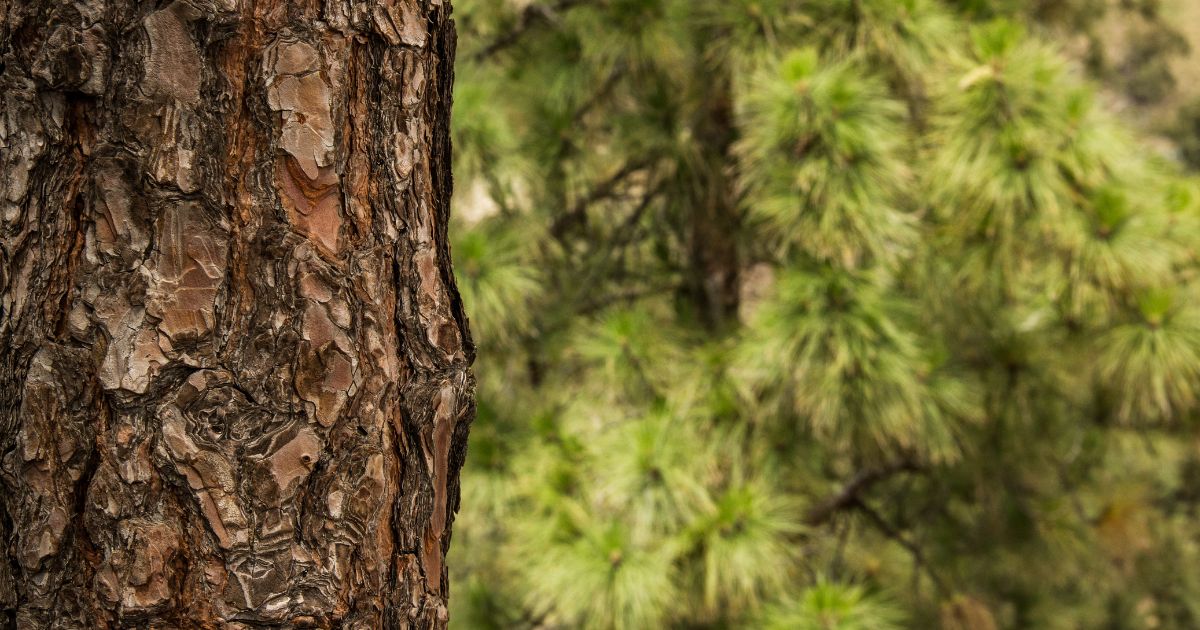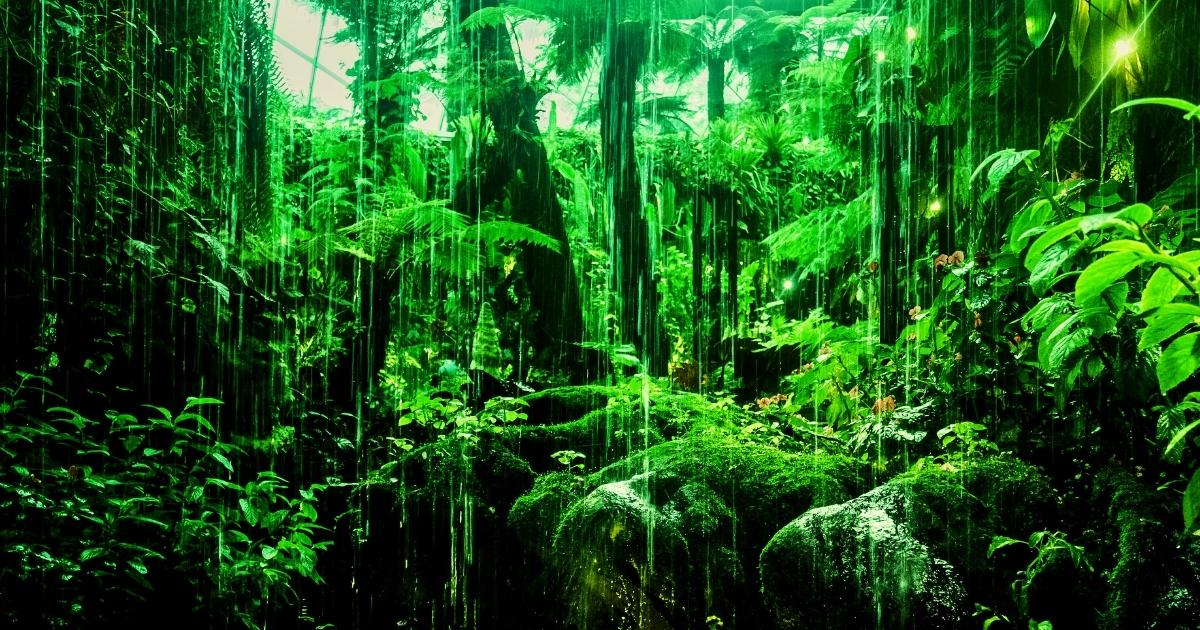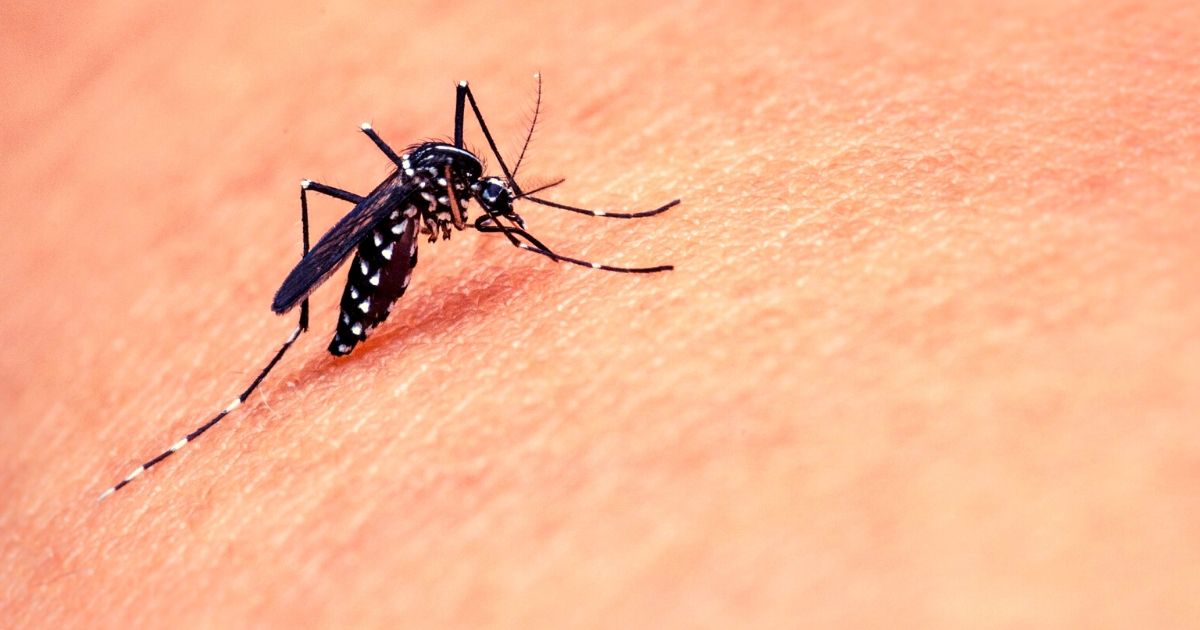The Ultimate Guide to Termite Pest Prevention, Treatment and Control in Singapore
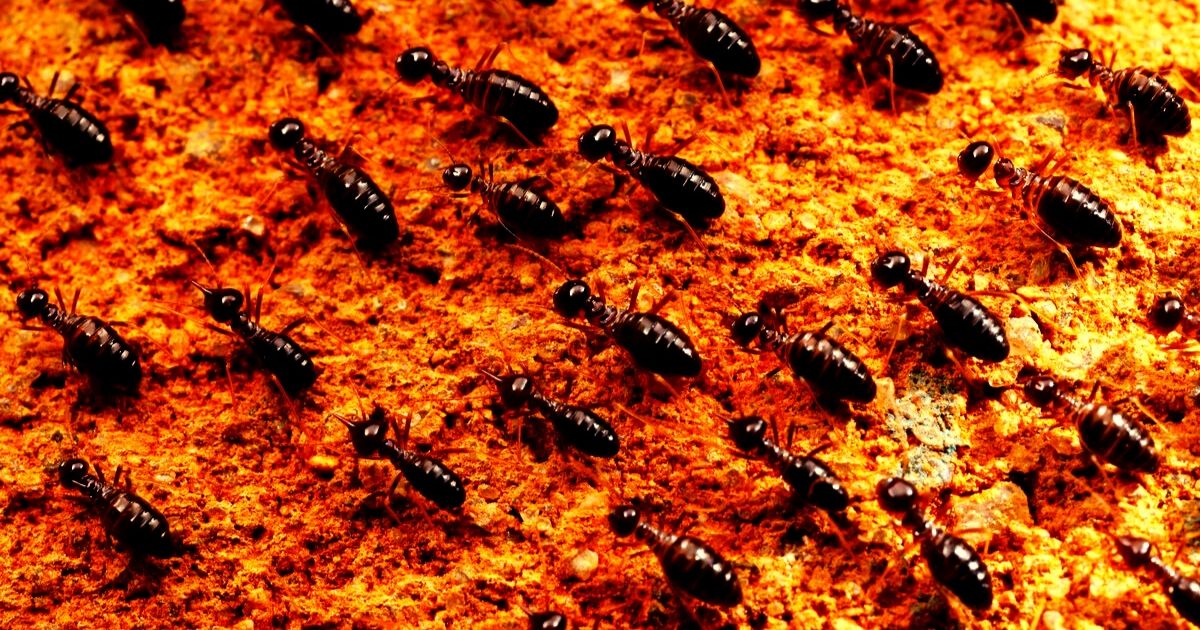
Termites are tiny insects that are well-known to the public for their ability to feed on and damage timber. Many homeowners or individuals who have experience dealing with termites, can probably relate a termite infestation to one of their worst nightmares if not handled properly.
“If you know the enemy and know yourself, you need not fear the result of a hundred battles.”
This is a famous quote from the great military strategist Sun Tzu. It is advised for us to understand more about an opponent or a problem we are facing. The goal is to come out with effective ways or solutions to conquer the problem. In this case, by knowing more about termites, we should be able to manage a termite infestation.
Table Of Contents
- Types of Termites in Singapore
- Life Cycle and Biology
- Signs of Termite Infestations
- Damage
- The Best Ways to Get Rid of Termites – What You Can Do
- What to Do When You Spot Them
- DIY Termite Treatments That Cost Less Than 10$
- The Best Ways to Get Rid of Termites
- Professional Termite Treatment: Baiting
- Professional Termite Treatment: Soil Treatment
- Professional Termite Treatment: Dusting
- Different Treatment Methods for Termite Pest Prevention
Types of Termites in Singapore
There are more than 3000 living and fossil species of termites around the world. Termites are classified into three main groups: Subterranean termites, dry wood termites, and damp wood termites.
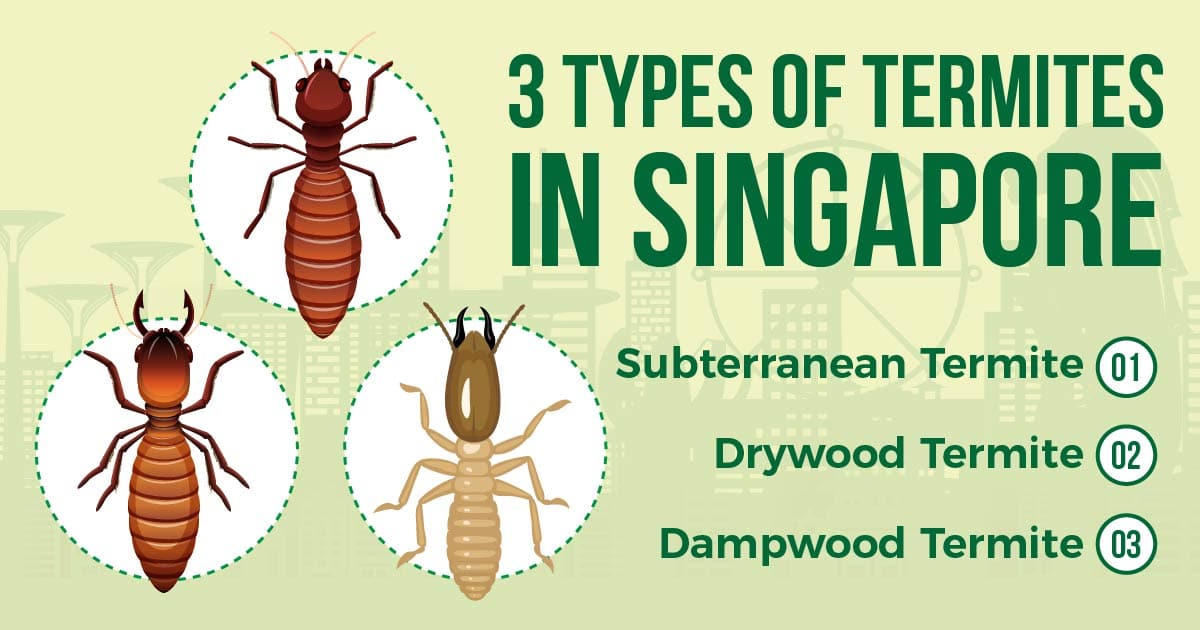
All three groups of termites live in Singapore. Subterranean termites and drywood termites are the ones of most significant concern to humans. In contrast, the damp wood termite plays a vital role in the ecosystem as a decomposer, especially in forested areas.
Subterranean Termites
As their name implies, most subterranean termites live underground. They look for areas free of human disturbances. Subterranean termites rely greatly on moisture in the soil. They have an excellent ability to build mud tubes to travel above ground. Mud tubes are tunnels made of soil, cellulose and other particulate matter. This helps termites prevent water loss as they travel above ground.
Drywood Termites
Drywood termites are not dependent on the moisture in the soil, so they live inside wood. They house themselves in structures made of dry wood such as doors, walls, furniture shelves and cabinets.
Dampwood Termites
Dampwood termites infest wood materials with high moisture content. They often live in decaying logs in the forest. Dampwood termites require a constant supply of water sources. For that reason, the termites usually house themselves in forested areas with fallen trees and decaying timbers.
What Causes Termites?
- Presence of wood
- Moist environment
- Poor maintenance
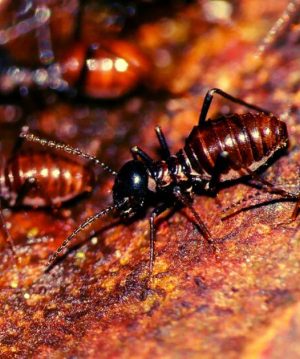
Life Cycle and Biology
One of the most fascinating behaviors in the world of insects is eusociality. Termites are eusocial insects that live in multigenerational families, practice cooperative brood care and division of labor.
In a termite colony, individuals are divided into three castes: reproductives, workers and soldiers.
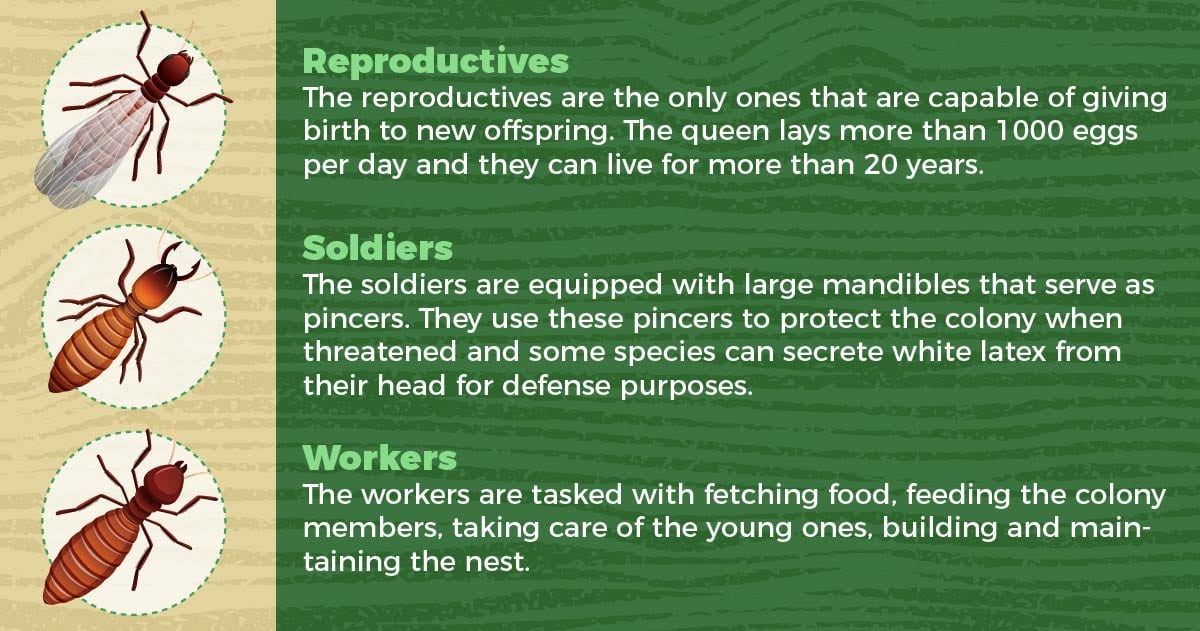
Reproductives
In a termite colony, the reproductives are the only ones capable of giving birth to new offsprings. The winged termites that are often seen swarming around light sources are reproductive termites. They are called alates or swarmers. Winged termites leave their nests to form a new colony. They find their mates through swarming and search for suitable nesting sites upon successful pairing. These termites form the king and queen of the new nest.
The queen lays more than 1000 eggs per day and they can live for more than 20 years.
A termite colony may continue to survive after the death of the king and queen. There are secondary reproductives that can take over their duty.
Soldiers
The soldiers have large mandibles that serve as pincers. They use these pincers to protect the colony when threatened and some species can secrete white latex from their head for defense purposes. The large mandibles hinder the ability of the soldiers to feed. There, they have to rely on the workers for feeding.
Workers
The workers fetch food and feed the colony members. They take care of the young ones by building and maintaining the nest. Workers are the ones responsible for the damages done. In some colonies, the workers also consist of the immatures. These can further develop into reproductives or soldiers when necessary.
Signs of Termite Infestations
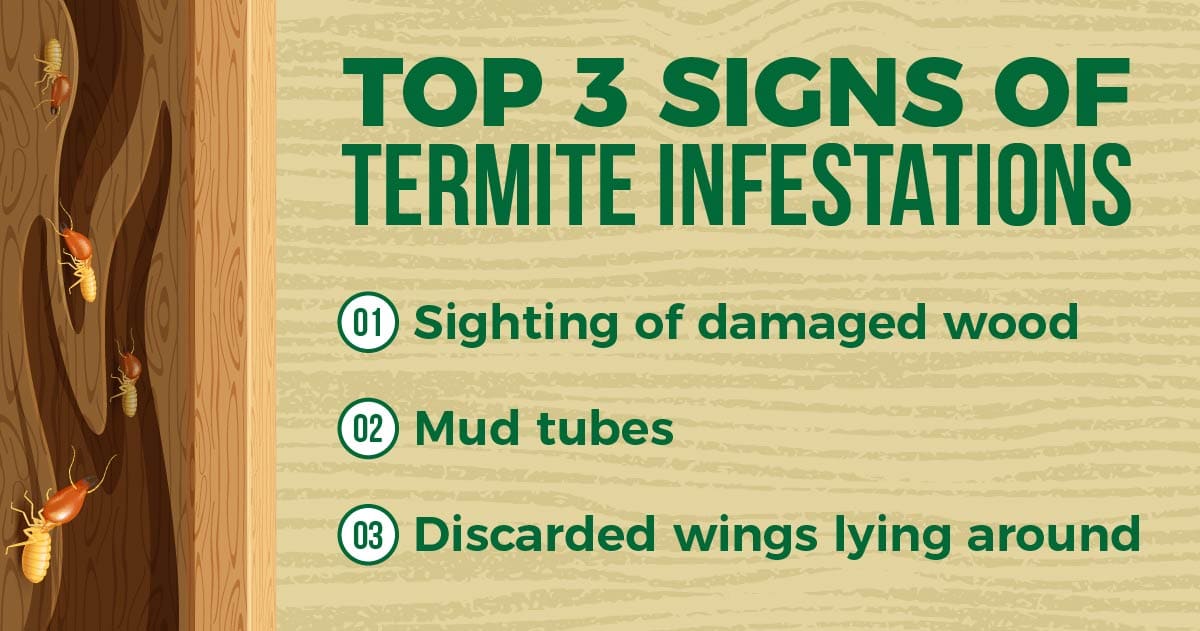
One of the most obvious signs of termite infestations is the sighting of damaged wood. Termites usually feed underneath the surface of wood. Their damages cause the surface to appear bubbly. Damages caused by subterranean termites sometimes resemble water damage.
The mud tubes constructed by subterranean termites for traveling above ground serve as another distinct sign of a termite infestation.
A large number of mud tubes are commonly found in areas with heavy infestations.
Termites feed on the interior of wooden structures. This empties the structures and gives off hollow sounds when they hit their heads.
Termites can communicate by sound. Termite soldiers hit their heads against the tunnels to alert the other colony members when disturbed. When this happens, a tapping sound often comes from the infested wood.
Flying termites are a nuisance. The wings they shed is unsightly especially when in large numbers. The presence of a large number of flying termites and discarded wings might indicate the presence of a termite colony nearby.
Drywood termite infestations are detected through the presence of their fecal pellets that resemble wood dust. The fecal pellets are found near infested wooden structures. These pellets push through exit holes that are visible on the surface of the infested wood.
Last but not least, a termite infestation can be confirmed when live termites are spotted. Although it is not common, termites can be detected when their mud tubes or infested wood are accidentally disturbed.
Damage
Termites can cause severe damage. The colony size of a subterranean termite can easily reach 1-2 million in total. It would only take less than 6 months for them to finish a 2×4 wooden beam.
Structural Damage
The most significant damage caused by termites is on buildings and structures.
They feed on cellulose materials in wood. By hollowing it out, they cause wooden structures to weaken and become frail. They weaken the wooden structures like beams, pillars and ceiling. In turn, this eventually leads to the collapse of the structures.
Safety Concerns
Timbers were the primary materials used in the construction of older buildings. Some of the wooden structures are preserved for modern use. Termites can hollow out roof truss, beams and pillars. This causes the roof or the entire building to collapse when they can no longer sustain the structures’ weight.
Aesthetic Damage
Besides causing structural damages, termites can also affect the aesthetics of a building. Chipping paint, uneven surfaces, grooves on wood and mud tubes are some sights that one might notice in an infested home.
Fire Hazard
Subterranean termites are known to infest the electrical components such as circuit boxes and wire trunkings, which are rarely accessed by humans. They may damage the electrical elements, causing short circuit and even fire.
Health Concerns
Termites are not of medical importance as they do not transmit diseases to humans. However, due to the moist and humid environment in which they reside, they are usually accompanied by mold and fungi. The spores released by the molds and fungi may have adverse effects on people with allergies or asthma.
Damage and Repair Costs
When termites severely infest an object or structure, money is needed to repair or replace them. More often than not, termite infestations require homeowners to repair or replace more than one item. For example, termites infesting the wooden parquets and skirting require the replacement of both items.
Pro Tip: DIY treatment is ineffective unless it can target the underground colony or the nest.
The Best Ways to Get Rid of Termites – What You Can Do
Pest management professionals in Singapore may carry out inspections during their visits to your house. You can rely on them to keep tabs on termite activities. However, if you do not have a contract with one, you will have to get rid of termites yourself.
Where to Spot Them
1. Flooring and skirting
Damaged or raised portions of wooden flooring and skirting are indications of termite infestations. Mud tubes are visible on corners and edges where the wall and floor meet.
2. Storerooms
Termites are spotted in storerooms, especially if human movements are infrequent or if there are hidden corners that are hard to access.
3. Pipes
Areas around pipes usually have higher humidity, which termites prefer. Moisture content can also be high if there is leakage. This makes the area around pipes a hotspot for termite infestations.
4. Exterior wall
Mud tubes can be seen on exterior walls as termites make their way into your house.
5. Outdoor area
Termites can hide among the unused building materials piled outside of your home. The tree stumps in your garden can be infested with termites if not removed quickly.
6. Wooden door and window frames
Wooden door frames are present in most homes and they can become infested with termites. Look for signs such as mud tubes or exit holes and faecal pellets when you clean your windows and doors for early detection of termites.
What to Do When You Spot Them
If you come across any sign of a termite infestation, it is important to remember that termites are unlikely to cause any devastating damage overnight. Therefore, do not panic and do not use conventional insecticide aerosols to spray the affected area! You may snap a photo of the affected area so that your pest management service provider can identify the type of termite infestation you are facing. It is important to not disturb the affected area.
Some homeowners may try to clear any mud tube or infested wood. It is not advisable to do so unless recommended by the pest management professionals.
This is because it may make the control of termites more difficult when a colony is disturbed. Contact a local pest management professional in Singapore so that they can provide you with useful advice and control measures.
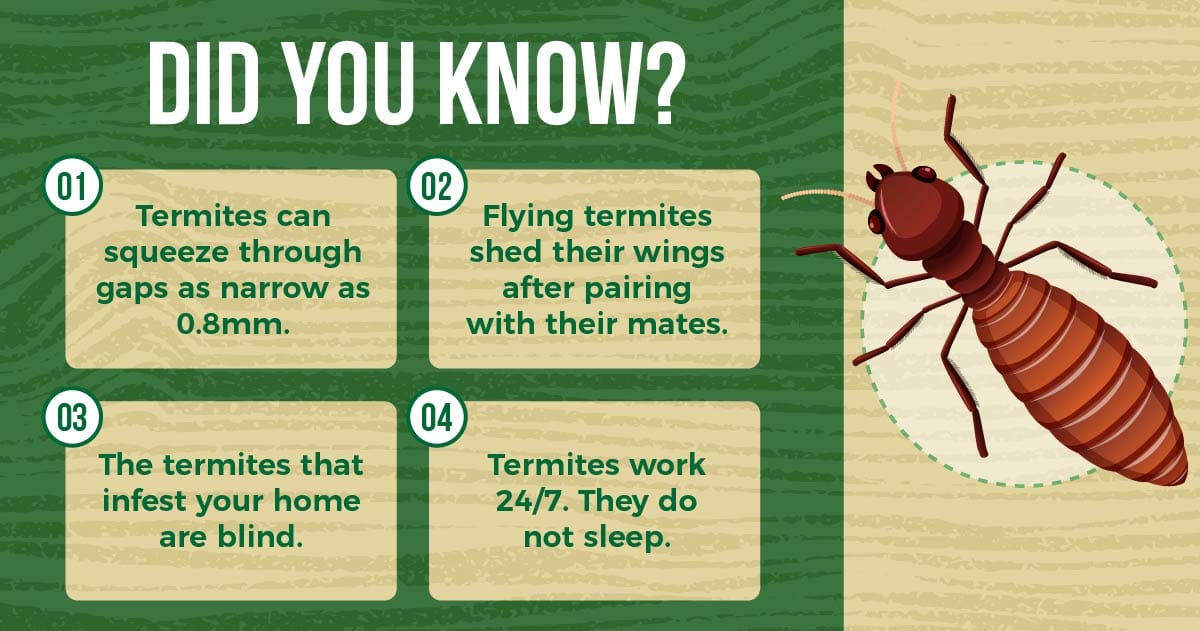
DIY Termite Treatments That Cost Less Than 10$
While the execution of termite treatments generally requires professional knowledge and training, there is something you can do to get rid of the annoying flying termites. All you need is soapy water and a light source.
Like many other insects, flying termites get drawn to light sources, so when water is placed under a light source, termites can get confused and are drawn to the reflection of light in the water, causing them to drown in the water.
The Best Ways to Get Rid of Termites
As mentioned earlier, subterranean termite colonies live underground. Only a small portion of the colony members move above the ground. Therefore, treatment is ineffective unless it can target the underground colony or the nest. This is why we do not recommend homeowners to carry out any procedure on their own.
Professional Termite Treatment: Baiting
To target the underground colony, baiting treatment is the most suitable method. The bait used by pest management professionals is specifically designed only to target subterranean termites. The bait consists of cellulosic material impregnated with an insect growth regulator. The cellulosic material serves as a food attractant while the insect growth regulator acts as a slow-acting toxicant.
After the termite workers consume the bait, other termite colony members receive the toxicant. Baiting treatment usually takes 1 to 2 months to suppress a whole termite colony. It might seem like a long treatment period, but it is the best method to prevent re-infestation from the same termite colony.
Professional Termite Treatment: Soil Treatment
However, baiting is not a panacea. Some other subterranean termite species are less likely to be affected by baiting. They are the fungus-growing higher termites that have alternative food storing in the fungus comb besides having wood as the primary source. The transfer of toxicants will be slowed down, especially if the target colony size is big. In this case, soil treatment replaces baiting.
Soil treatment is an approach that applies Green-label certified liquid termiticides to create a chemical barrier in the soil under or around the foundation of a building. The termiticides can prevent the invasion of subterranean termites for years.
Professional Termite Treatment: Dusting
Also, one of the most conventional methods of managing termites is dusting. This method is the least expensive treatment. It is used to puff insecticidal dust into the mud tube of termites. The foraging termites, which have been puffed by the dust, are expected to pass the toxicant to their nestmates by social interaction.
The success of dusting depends on the skill and technique of the pest management professional. If too much dust puffs into the mud tube, the treated termites will die before they pass on the toxicant.
Different Treatment Methods for Termite Pest Prevention
The treatment methods for drywood termites are different from the treatments used to control subterranean termites. As previously mentioned, they have different biology and behaviour.
Drywood termites do not need soil and moisture to build their colony. Infested wood with drywood termites transported everywhere. Since the whole colony of drywood termites can live within a piece of timber structure, we should inspect and treat the wood before we use or move the wood into our home.
Wood can be pre-treated with chemicals to stop termites from digesting inside the wood. Then, varnishing the wood or applying a fresh coat of paint helps prevent the attack of drywood termites in the future.
It is often too late to perform any prevention once you have noticed the presence of fecal pellets. There are several ways to treat drywood termites, but the most common method is a wood replacement. The reason behind this is to remove the entire termite colony in the infested timber.
Some pest management professionals may provide fumigation for drywood termites treatment, while others may offer the foaming method if there is only a mild infestation. However, the success of treatments for drywood termites is often unpredictable. Therefore, prevention is better than cure.
In general, cooperation between you and your pest management professional is the major key to the success of termite treatment. If you would like more information on how Killem Pest can help you from termite infestation, get in touch or call us now!
Frequently Asked Questions
Termites very rarely bite humans, and as these bites are not toxic they don’t pose health risks.
Termites don’t transmit diseases harmful to humans, however, some people can suffer from allergic reactions and asthma attacks when living in infested homes.
You can kill termites by using special chemicals that kill termites in infested areas. It’s best to consult pest control specialists to avoid poisoning your pets or children.

